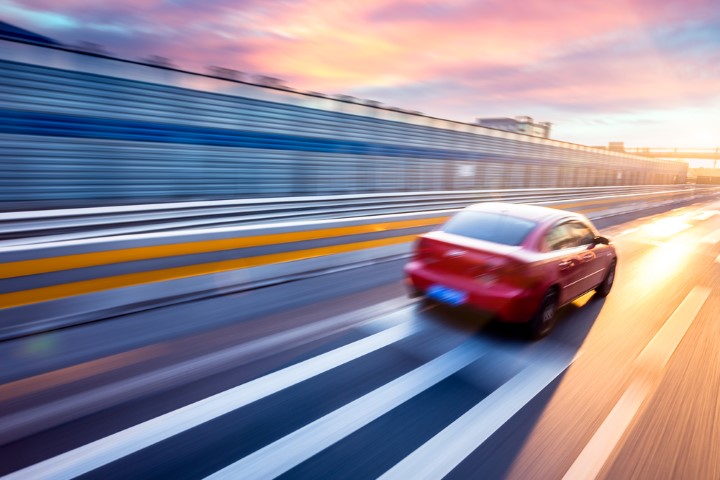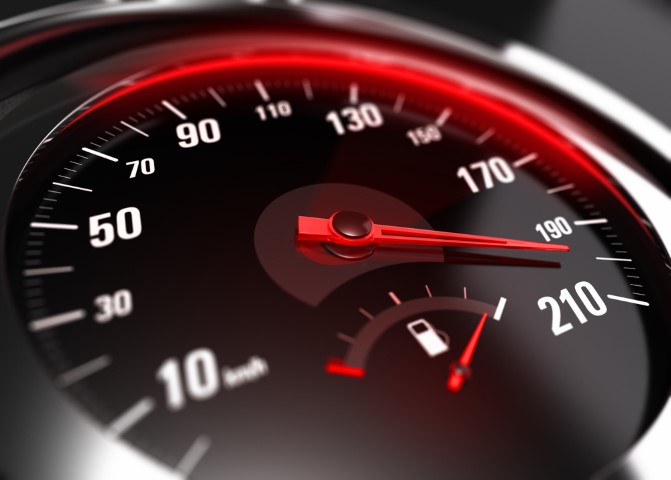 If you have a habit of speeding while you’re driving, then you’re directly placing yourself and others in harm’s way. Speeding is a dangerous disregard for road safety that makes accidents more likely and it intensifies the severity of the resulting injuries.
If you have a habit of speeding while you’re driving, then you’re directly placing yourself and others in harm’s way. Speeding is a dangerous disregard for road safety that makes accidents more likely and it intensifies the severity of the resulting injuries.
You may have reached this point without any accidents, but this is only because of luck and it won’t last forever. The Habit of Speeding makes you highly unpredictable to other drivers and they may not have time to adequately react to avoid an accident with you.
This means that your safest option is to stick to the speed limit and commit to safer driving habits. To get you started, we’ve got some great ways to reduce the motivation to speed below.
Leave Early
One of the best ways to prevent yourself from speeding is to leave early.
If you know your trip only takes 10 minutes, leave 15 or even 20 minutes early. It’s very easy to leave “on time”, but then you waste time getting the car ready and there’s also the likelihood of traffic.
In these scenarios, you may be tempted to speed to reach your destination on time. This tends to happen a lot when you might be late for work and can’t lose your job.
While the desire to keep your job is understandable, The Habit of speeding is unnecessary here. When you know you have to be at work at a certain time, you can account for random losses of time during your drive by planning your night and morning better.
When you’re not urged by the pressure of being late, you won’t need to rush or speed. The earlier you leave, the more wiggle room you have here and the lower your chances of eventually feeling compelled to speed.
Reduce Potential Triggers
It is also important that you reduce potential triggers for speeding.
Being late is one trigger that most drivers face, but you may also have other factors that influence you specifically. Good examples of this include fatigue, anger or road rage, and peer pressure from flashy cars or other speeding drivers.
If you see something on the road and it makes you want to step on the gas, then this is something you should focus on minimizing. Reduce how often you experience these trigger points and find effective ways to manage them.
Should your primary trigger involve other fast drivers, try to find a route that has slower roads and generally safer drivers. If you still see speeders, find a way to remember that you don’t also have to speed and that driving the speed limit is the best thing for you.
When you take note of what makes you want to speed and limit how often you are faced with it, you’ll have far less temptation to let loose and accelerate.
Appreciate the Risk Involved
It is also crucial for you to appreciate the risk involved with speeding.
If you don’t know why speeding is bad for you, then why would you stop? Speeding can be fun and exciting, so there must be pressing reasons to deter you from the behavior you might enjoy.
Specifically, speeding is unsafe because of the increased risk of accidents and injuries. It also carries the potential for tickets and legal action.
Speeding makes accidents more common because it increases your stopping time and reduces your ability to make quick adjustments. Other drivers might get nervous and overcorrect or fail to see you entirely and proceed to merge into your lane without giving you time to stop.
If an accident doesn’t happen, you can still be penalized by the law for speeding. This begins with tickets and fines but can escalate to license suspension and jail time if the behavior continues and conditions are bad enough.
Speeding is both against the law and dangerous, and you will eventually face consequences if you continue to speed. Understanding this well will allow you to easily refrain from speeding when you know what’s at risk.
Use Speed Monitoring Technology
Lastly, using speed monitoring technology is a helpful solution should you lack self-control.
You can understand the risk involved with speeding and want to stop, but it can still be easy to fall into bad habits. This is especially relevant when driving becomes second nature and doesn’t require as much active thought. If you autopilot while driving, you might wind up speeding without even recognizing it.
Fortunately, many smartphone apps are available to track your motion and inform you of speeding. With a loud audio cue, you’ll have a powerful reminder to slow down and drive safely.
These apps can track your driving data and provide you with statistics. If you’re results-driven, seeing a record of slow, safe driving can help motivate you to continue good habits.
Because it’s surprisingly easy to speed, you might need an extra sign to slow down before being pulled over. Consider the use of an app or other safe driving technologies to help you always drive slowly.
Closing Thoughts
One of the best ways to avoid accidents on the road is to drive the speed limit. Conversely, speeding is incredibly dangerous and directly results in more accidents and greater bodily injury than slower accidents.
Unfortunately, speeding is very tempting and easy to do without noticing. This is why you must reduce temptation and proactively prevent yourself from speeding by leaving your house early, reducing potential triggers to speed, appreciating the risk involved, and considering using speed-monitoring technology for extra assistance.
Committing to safe driving is an excellent investment in your future health. Focus on keeping your speed down today and you’ll have the good habits you need to prevent costly speeding accidents and tickets down the line.










